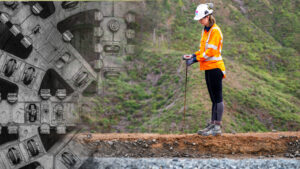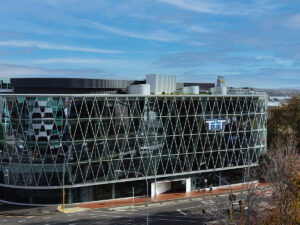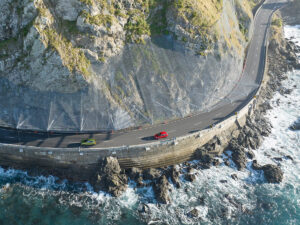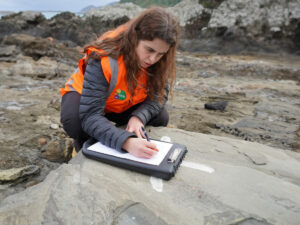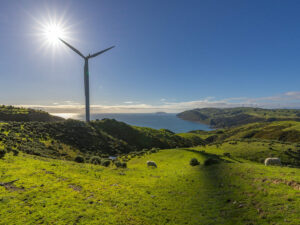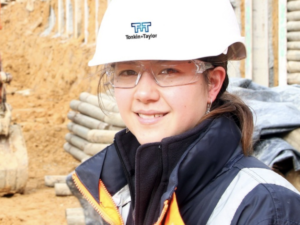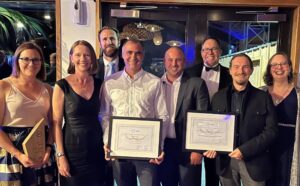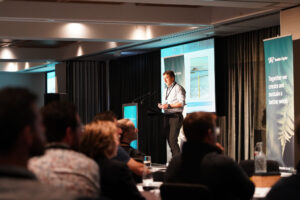
Tunnel 21 is a KiwiRail tunnel situated on the Main North Line (MNL) between Ward and the Ure (or Waima) River, about 45 minutes south of Blenheim. The tunnel was constructed during the ‘Golden Age’ of the railways (1870s – 1945), with the tunnelling works completed in 1913. At this time, the MNL was segmented along the east coast of the upper South Island, with this section of the line starting in Blenheim and extending towards Kaikōura. It reached Seddon in 1902, Ward in 1911 and then Wharanui (13 km south of Ward) in 1913, before the onset of World War I saw progress halted and 7529 railway workers released for war service. Thousands were again released during World War II. The MNL was finally completed in 1945, the feat marking a significant point in history as New Zealand’s longest railway construction project. The line now spans from Addington in Christchurch to Picton in Marlborough, along a total length of 348 km. In its heyday, there were 65 bustling stations along the route.
A deteriorating tunnel
Tunnel 21, also known as the ‘Tar Barrel’, extends 167m through a weak and fractured mudstone rock, adjacent to the London Hill Fault. There have been several stories as to the origin of the name ‘Tar Barrel’. The most likely explanation is attributed to a shipwreck near the mouth of the Ure River, where barrels of recovered tar were carted up the hill and stored near to tunnel portal. A barrel reportedly tumbled down the hill, exploded and spilt tar near one of the tunnel portals. The tunnel was lined with in-situ concrete and concrete blocks which had seen better days. Records dating back to the 1970s showed there was cracking in the concrete lining and recommendations for repair works were proposed. Since then, only minor works had been done, and, with the recent Seddon and Kaikōura earthquakes, the tunnel’s condition had deteriorated. Whilst local repairs and ongoing maintenance kept the tunnel operating safely, KiwiRail wanted to improve the long-term resilience of the MNL, while also increasing the line speed, reducing travel time and operating costs.
The tunnel has now been infilled with site-won mudstone fill to eliminate the liability, and to ensure resilience to SH1 above.
Time for resilience improvements
Options for remedial works were first explored by NCTIR in 2017, before T+T was engaged to work alongside KiwiRail to lead a multi-disciplinary team of consultants to advance the project. From this point on, the project has ran at bullet-train pace, with the team performing an options assessment, geotechnical site investigations, property acquisitions and detailed design, as well as resource consent and change of designation applications. The project was tendered in late March 2019, in parallel with detailed design. With the tender being awarded in May 2019 and the main works contractor arriving on site to start construction work promptly in June of that year, it was rewarding to see physical works starting to materialise quickly after all the initial hard work.
As a result of the options assessment process, KiwiRail decided that the preferred solution was to decommission Tunnel 21 and re-route the railway through a hill beneath State Highway 1 (SH1) – south of the existing Tunnel 21. The end result was a rail realignment length of c.1500m and a road realignment/change in grade length of c.700m. All in, c.400,000 m3 of mudstone was excavated and transported to nearby fill sites, leaving cut slopes up to 35 m high. There is also a new c.100m long rail underpass structure and approach retaining walls crossing beneath SH1. Some people say we’ve replaced a tunnel with a tunnel, but we say it’s an underpass! The project team had to overcome a number of complexities including seismic risk, slope stability issues arising from the weak and fractured mudstone, the presence of organic materials and predicted settlement surrounding the proposed rail underpass structure and SH1 embankments, the presence of wetlands, integration of stormwater control systems, and planning and consenting challenges.
The project has drawn on many of T+T’s finest skill sets across numerous disciplines and offices. As the lead consultant, T+T provided project management, design management, geological site investigations, geotechnical design, civil and stormwater design, ecological services, planning and environmental services. To round out the team, we partnered with Vitruvius to carry out the road and rail geometrical design, Holmes Consulting for the structural design, Beca for the pavement design, road safety audits and peer reviews, and with The Property Group for property acquisition services. Whilst a majority of the team is based in Nelson, support was provided by staff in Christchurch, Wellington, Hamilton, and Tauranga. This project has showcased how T+T can successfully deliver major projects from our regional offices, using a team drawn from all over the country. This has been made possible with tools such as Skype for Business, Microsoft Teams, Project Orbit, our agile work environment, and a client which doesn’t see distance as a barrier to success. Feedback from KiwiRail has been overwhelmingly positive.

 New 1600 diameter culvert being installed beneath the MNL
New 1600 diameter culvert being installed beneath the MNL
 Excavation of the new rail alignment with recently sprayed hydroseed on the batter slopes
Excavation of the new rail alignment with recently sprayed hydroseed on the batter slopes
 Construction of the new ‘Tar Barrel Tunnel Bypass’ with a temporary diversion of SH1 in place until the road can be directed over the roof of the new rail underpass.
Construction of the new ‘Tar Barrel Tunnel Bypass’ with a temporary diversion of SH1 in place until the road can be directed over the roof of the new rail underpass.


